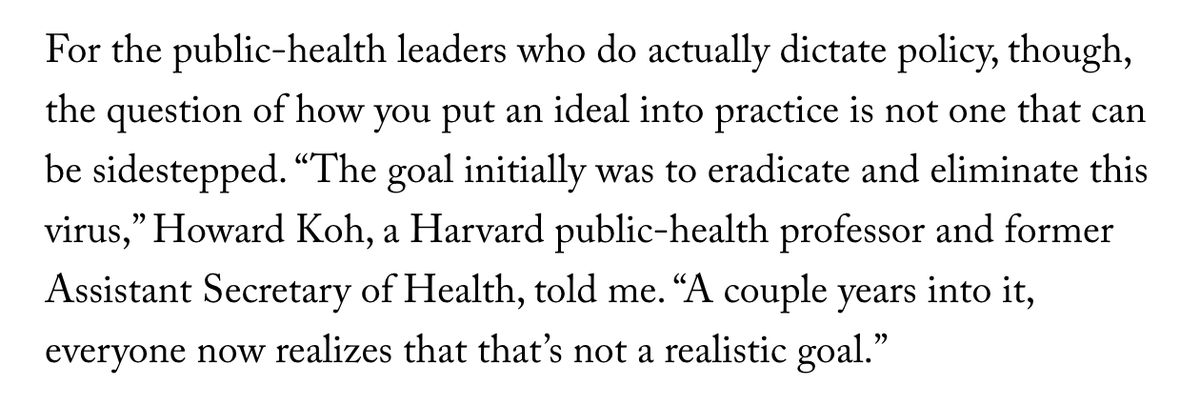It's unfortunate to see some of the most respected venues in journalism taking this turn—exceptionalizing individuals and groups who advocate for greater public health protections and portraying them as deviant, immature, countercultural, Marxists, etc. 1/
newyorker.com/news/annals-of…
newyorker.com/news/annals-of…
This essay describes critiques as “grievances”; positions as “beliefs,” and accuses the People’s CDC of “activist-speak” and “eye-popping claims.” In this, it gives a ton of cover to agencies & officials who have gone out of their way to distort, misdirect, and miscommunicate 2/
The author’s framing here, for example, suggests that the critiquing the CDC’s highly tendentious Community Levels metric is a “grievance”—and so is drawing attention to the lack of a public conversation about long COVID 3/ 

At the “bridge” of the essay, the author’s big move is to paint the aspirations of the People’s CDC as unrealistic via a false framing (“zero COVID deaths”) and a false analogy (“if the US were an island in the South Pacific”) 4/ 

At the end of that graf, the author presents a quote that makes the speaker sound like a hippie (“lean into love and equity”). This is a real Joan Didion move, cribbed from The White Album and Slouching Toward Bethlehem—a rhetorical/stylistic means of discrediting the left 5/ 

The transition and following paras present the next set of speakers—all critics of the People's CDC—as authorities and voices of reason (“...the public-health leaders who do actually dictate policy”). Those quoted include widely critiqued figures like Tom Frieden & Leana Wen 6/ 

This paragraph is maybe the most problematic in a deeply flawed piece. The author is muddying the water here (“it’s tough to adjudicate...”)—and regrettably drags the eminent historian Amy Fairchild into a left-baiting argument about “moralistic scientism” 7/ 

Next comes a hell of a journalistic segue, leading with the alleged deficits of “scientific moralism” and cuing up notorious COVID minimizer Leana Wen as an expert equipped to speak authoritatively to the incidence of long COVID and the medical definition of the diagnosis 8/ 

Next pivot is to (a) disingenuously present critiques of Wen in the most unfortunately unserious terms, and (b) point to Wen’s recognition by APHA—ginning up sympathy for an M.D. who has incessantly called for the end of pandemic mitigations 9/ 

And to cue up the reader’s sympathies for the CDC, “the punching bag of our country” per Anne Zink’s quote.
Zink goes on to psychologize critiques of CDC policies as eugenicist, characterizing them as motivated by “just more sadness” 10/
Zink goes on to psychologize critiques of CDC policies as eugenicist, characterizing them as motivated by “just more sadness” 10/

The author concludes the piece on this rather fatalistic and complacent note—“In much of America, the pandemic has seemed over for a long time”—and essentially treating that as a kind of “gotcha,” as if it proved that the People's CDC is fanatical or somehow misled 11/ 

While the disparaging, insinuating, passive-aggressive tone of this essay makes it read as poorly motivated clickbait, the author is also simply wrong on the facts. The People’s CDC is not advocating for “masking forever” or for “zero COVID.” 12/
It’s so frustrating to see another journalist leveraging the conventions of longform journalism—framing, perspective, sequencing, diction—to build a weakly evidenced case against 1 of the few groups that is pushing back against the Biden admin’s deeply flawed COVID response. Fin/
• • •
Missing some Tweet in this thread? You can try to
force a refresh









